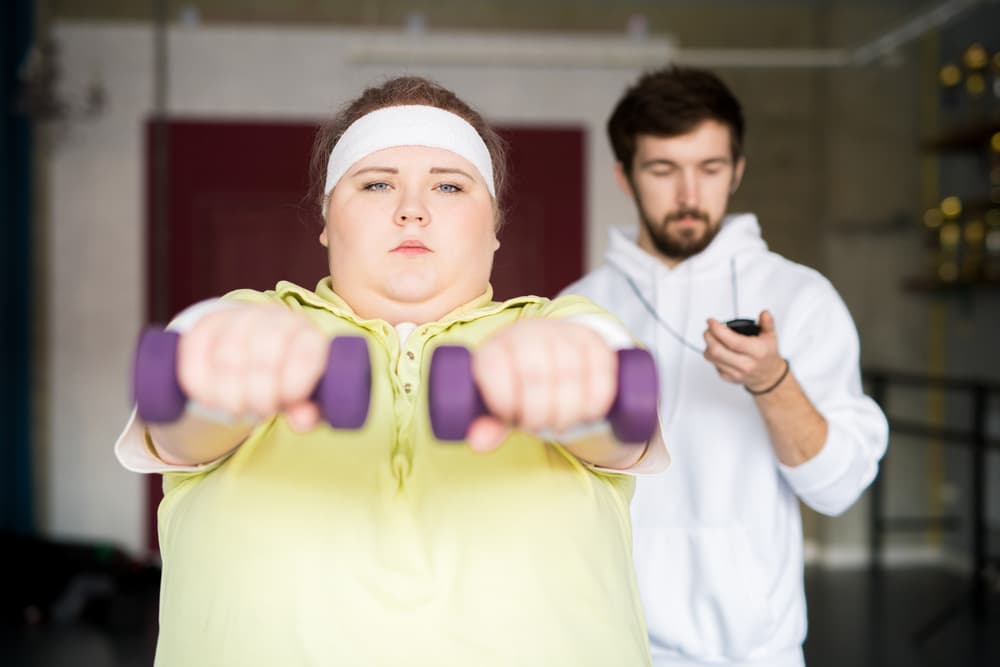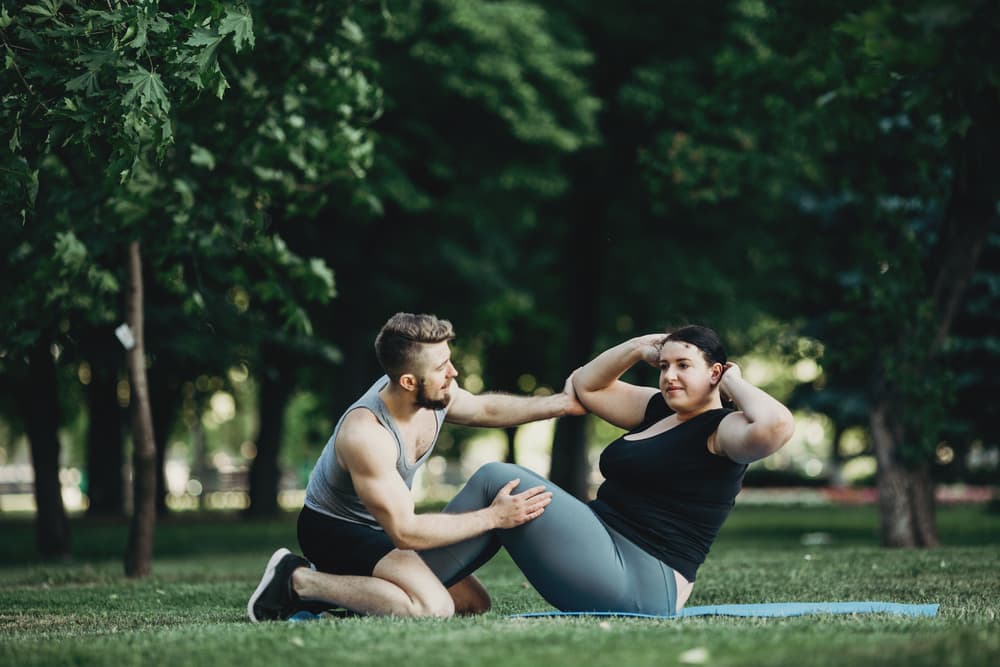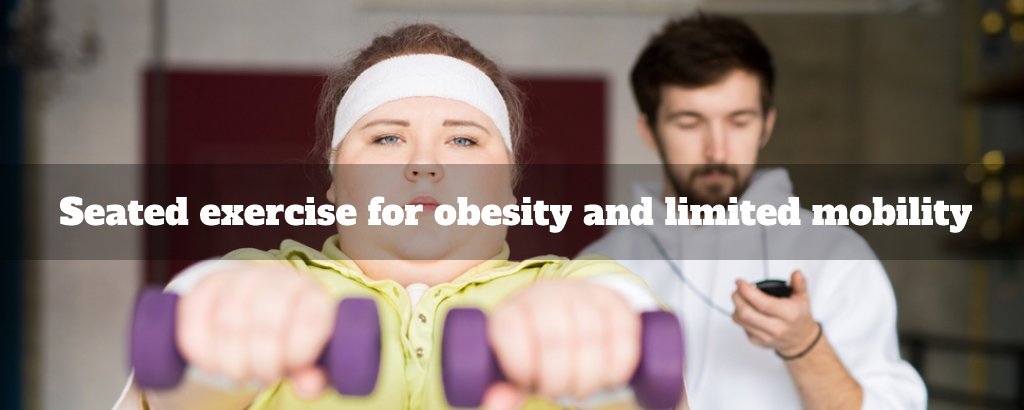Chair exercises, such as chair aerobics, chair yoga, and chair Pilates, can help build muscle strength and improve balance while providing a low-impact workout.
A chair exercise routine also helps burn calories and fat, aiding in weight loss paired with a healthy diet. Chair exercises can be done in the comfort of your own home, making it an ideal choice for those who struggle to get out and exercise due to obesity.
Seated chair exercises are also a great way to relieve stress and help improve overall mental health. With the right chair and a few simple movements, chair exercises can help you reach your weight loss and fitness goals.
So find a chair, choose an exercise routine, and get started today!
This article is for informational purposes and should not be taken as medical advice. Consult your doctor before starting any chair exercises.
What types of exercise are possible with limited mobility?
Exercises possible with limited mobility depend on the individual’s ability and what they want to achieve.
Generally speaking, chair exercises can be effective for weight loss, toning muscles, increasing strength and flexibility, improving cardiovascular health, and managing chronic conditions such as diabetes or arthritis.
Chair aerobics is a great form of exercise. Aerobic exercises include arm circles, marching in place, stepping side to side, and more.
Resistance bands are also great for weight loss and toning, providing resistance during movement and helping build muscle strength. Resistance bands combined with chair yoga are another popular option, offering stretching and breathing exercises that help with flexibility and relaxation. Chair Pilates is also a great option for weight loss, improving posture, and increasing muscle strength.
No matter your fitness level or mobility limitations, there are chair exercises to meet your needs. Talk to your doctor before beginning any chair exercise routine to ensure you’re doing the right exercises for your body and goals. With a little effort, you can see weight loss, improved mobility, and better overall health with chair exercises!
Exercises in a seated position
Seated position exercises can be incredibly effective for losing weight, toning muscles, and improving overall fitness. Chair aerobics is one of the most popular forms of seated exercise, offering a low-impact way to burn calories and get your heart rate up. These exercises include arm circles, marching in place, stepping side to side, and seated toe stretch.
Chair yoga is another great choice for overweight people, combining stretching and breathing exercises to improve posture, flexibility, and relaxation. This can also be a great way to relieve stress and anxiety.
Use exercise bands or weights in your seated workout routine for added resistance. Resistance bands are a great form of low-impact resistance training, helping to build muscle strength and tone the body.
No matter your fitness level or mobility limitations, there are plenty of ways to get active. Talk to your doctor before beginning any seated exercise routine to ensure you’re doing the right exercises for your body and goals.
Chest exercises
Chest exercises in a chair are an excellent way to maintain good posture and build upper body strength without putting unnecessary strain on the lower body.
One of the most popular chest exercises is the seated chest press.
To do this, sit in a chair with your back straight and palms facing forward. Hold the dumbbells at chest level and, keeping your elbows close to your body, slowly push the weights away from you until your arms are almost straight. Slowly return to starting position and repeat.
You can add a few rows into your routine for extra upper back strength by sitting in a chair with your back straight.
Hold a dumbbell in each hand with palms facing inward and slowly pull the weights up towards your chest, keeping your elbows close to your body. When you feel the tension in your upper back muscles, hold for a second and slowly lower the weights back down.
Ankle stretch
Ankle stretches in a wheelchair are important to overall body health and mobility. Ankle stretches can help with flexibility, strength, and range of motion in the lower legs, which is especially useful for those with limited movement or who are dealing with pain due to arthritis or other joint conditions.
One great ankle stretch that can be done right in a chair is the right ankle stretch. To do this, sit comfortably with your right leg bent and your foot flat on the floor.
Grab the right ankle with both hands and gently pull it towards your body until you feel a stretch in your calf muscle. Hold for 10-15 seconds, then switch legs and repeat.
Another great ankle stretch is the left ankle stretch. To do this, sit comfortably with your right leg bent and place your left foot flat on the floor. Grab the left ankle using both hands and gently pull it towards your body until you feel a stretch in your calf muscle. Hold for 10-15 seconds, then switch legs and repeat.
Chest presses
Chest presses while seated in a chair is an exercises to help strengthen your upper body. You sit in a chair with your back straight, feet flat on the floor, and palms facing forward.
Hold two dumbbells at chest level and push them away from you until your arms are almost straight. Then slowly bring them back to starting position and repeat.
You can also use a standard resistance band for chest presses. Anchor the band to a stable surface, such as a door or railing, and grab each handle with both hands. Push the handles away from your body until your arms are almost straight. Then slowly bring them back to starting position and repeat.
Seated jumping jacks
Seated jumping jacks are a way to exercise while sitting in a chair. You keep your arms straight out and make the same motion as you would if you were doing jumping jacks standing up. Move your arms up and down with each jump, like clapping your hands above your head and then back down at waist level.
Make sure to keep your back straight while doing seated jumping jacks, and make sure you are pushing away from the chair each time.
This exercise is great for people with limited mobility who cannot do regular jumping jacks.
Seated jumping jacks can help increase heart rate, improve coordination, and build upper body strength. It is also a great way to stay active while seated in a chair.
How can I exercise if I can’t walk?
Exercising if you cannot walk is possible and can help improve your overall health in many ways. You can do various seated exercises in your home, such as chair aerobics, chair yoga, and resistance training with exercise bands and weights. These low-impact exercises can help you burn calories, lose weight, improve mobility, and boost your overall fitness.
In addition to chair exercises, other activities may be suitable if walking is not an option. Swimming or water aerobics can provide a low-impact way to get active while being gentle on the joints. Other activities, such as tai chi or yoga, can also be beneficial, helping to improve balance and flexibility. For an added challenge, lean forward out of the chair and do standing exercises such as squats or lunges.

How many minutes of exercise should an obese person do?
An obese person should aim to get at least 150 minutes of moderate-intensity exercise per week or 75 minutes of vigorous-intensity exercise. This can include aerobic and strength-training activities like walking, jogging, biking, swimming, rowing, yoga, or pilates.
Start slowly and gradually increase your exercise time if you cannot exercise at the recommended intensity or duration.
One study published in the Journal of the American Medical Association found that individuals who were obese and physically inactive had a significantly higher risk of developing type 2 diabetes compared to those who were of normal weight and physically active.
Another study published in the European Journal of Epidemiology found that obesity, combined with physical inactivity, was associated with a significantly increased risk of dying from cardiovascular disease.
How do you train a morbidly obese person?
One of the best methods for training a morbidly obese person is to start with a seated exercise.
Exercise balls can support the spine during seated exercises, such as jumping jacks and low-impact aerobics. Resistance bands or exercise tubing can also be used for seated strength-training exercises, such as bicep curls and shoulder presses.
To ensure safety and proper exercise form, it is important to consult with a certified personal trainer before starting an exercise program. A qualified professional can create a customized exercise plan tailored to your specific needs and goals.
Also, talk to your doctor before beginning any exercise regimen. Your doctor can help advise exercise intensity and duration for those with obesity or other conditions.

Why it’s important to exercise no matter your condition
Exercising is important for everyone, regardless of condition or ability level. Regular physical activity can help improve overall health in many ways, such as reducing the risk of chronic disease, improving mental well-being, and providing relief from everyday stressors. Exercise has also been linked to a longer life expectancy and an improved quality of life.
Physically, regular exercise has been proven to reduce the risk of chronic diseases such as diabetes, heart disease, and stroke. It helps to improve balance, coordination, and physical strength. Exercise can also help to improve mood by increasing endorphins and reducing stress hormones in the body.
Before you go
We’ve written a few articles on exercising to not only improve health but also help with self-esteem.
Check out the article on losing weight when you can’t walk and seated upper body workout for individuals in wheelchairs.
Let us know if we’ve missed anything.
Good luck, everyone!

